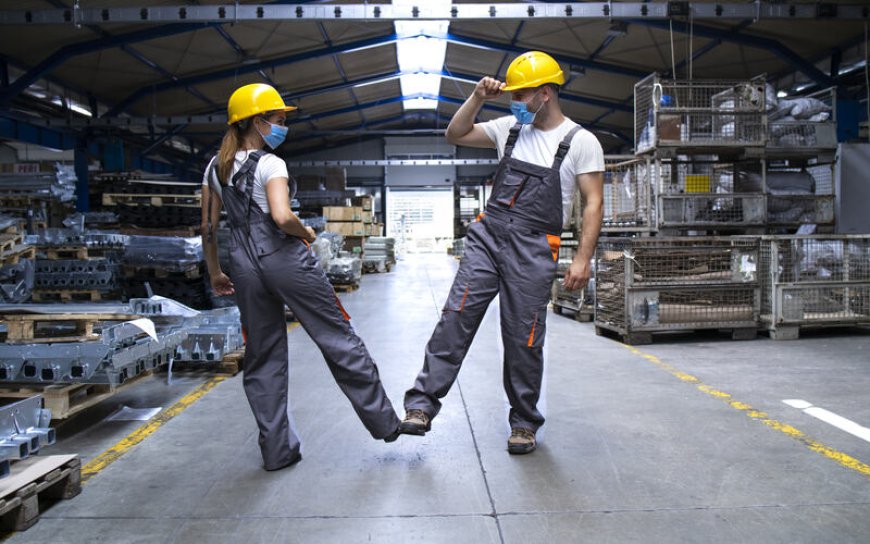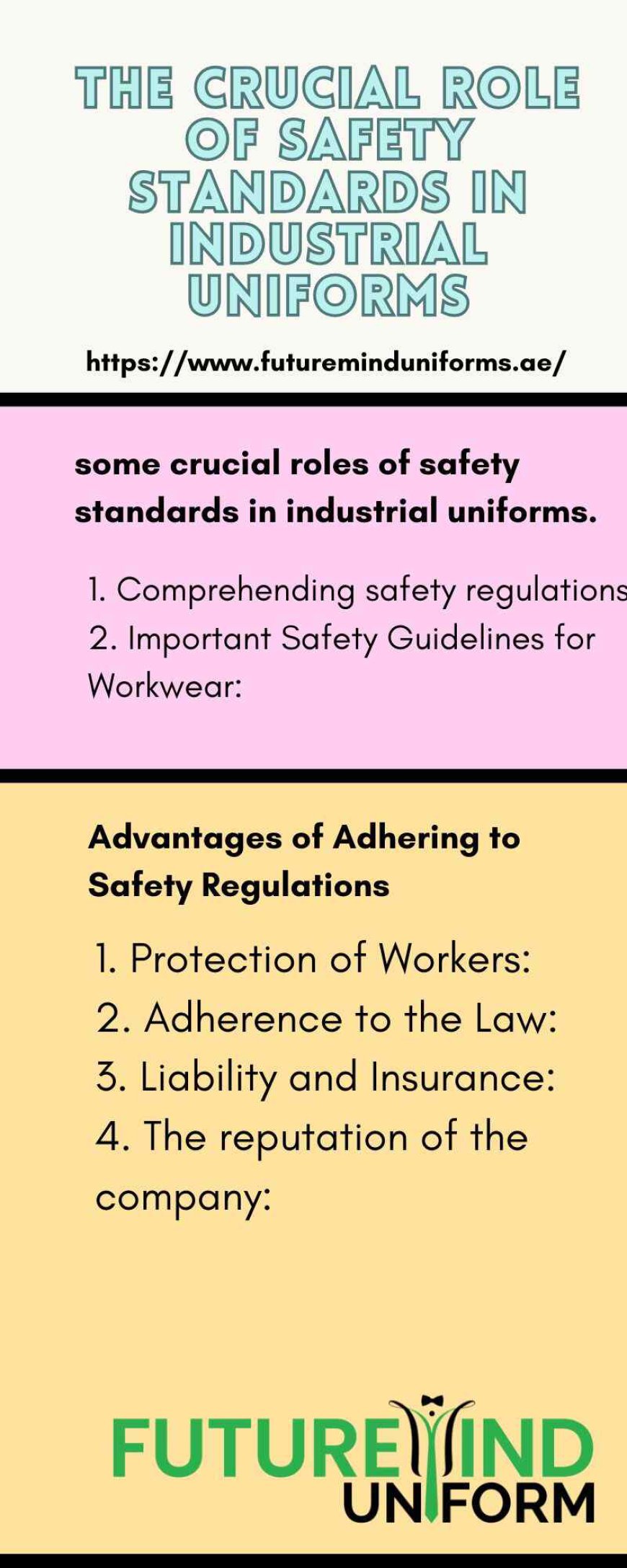The Crucial Role of Safety Standards in Industrial Uniforms

`In industrial settings, safety is paramount, and the role of uniforms extends far beyond mere aesthetics. Industrial uniforms are designed not only to represent a company's brand but also to ensure the protection and well-being of employees working in hazardous environments. Safety standards play a crucial role in the development and implementation of these uniforms, as they dictate the materials, designs, and features that are essential for protecting workers from potential dangers, such as chemical spills, extreme temperatures, and heavy machinery.
Moreover, partnering with reputable uniform suppliers Dubai that understand and implement these safety standards is crucial for businesses seeking to equip their workforce with the best protective gear. Such suppliers can provide tailored solutions that meet specific industry needs, ensuring that uniforms are both functional and compliant with local regulations.

Adhering to safety standards in industrial uniforms is vital for minimizing risks and preventing accidents. These regulations ensure that uniforms are equipped with protective elements such as flame resistance, high visibility, and durability. By prioritizing safety standards, companies can foster a culture of safety, enhance employee morale, and reduce the likelihood of workplace injuries, ultimately contributing to a more productive and efficient work environment.
Here are some crucial roles of safety standards in industrial uniforms.
Comprehending safety regulations:
Safety standards are regulations created to guarantee that, in dangerous work settings, uniforms offer the required level of protection. Organizations such as the American National Standards Institute (ANSI), the National Fire Protection Association (NFPA), and the Occupational Safety and Health Administration (OSHA) set these standards. They guarantee that uniforms are made to avoid fatalities and injuries by outlining the specifications for various kinds of protective apparel.
-
Important Safety Guidelines for Workwear:
These are the safety requirements that must be met by industrial uniforms.
-
Resistance to Flames (FR):
In fields like welding, oil and gas, and electrical work, flame-resistant uniforms are crucial. The self-extinguishing nature of these uniforms lowers the possibility of serious burns.
-
Excellent Visibility (HV):
For employees working in low light or close to moving vehicles, such as on construction sites or road construction, high-visibility uniforms are essential. To guarantee that employees can be seen from a distance, these uniforms are made of reflective materials and vibrant colors.
-
Protection of Chemicals:
Chemical-resistant uniforms are essential for industries handling hazardous materials. These uniforms guard against hazardous chemical spills and splashes. The requirements for these uniforms are established by OSHA's Hazardous Materials regulations, which guarantee that they offer sufficient protection.
Advantages of Adhering to Safety Regulations
-
Protection of Workers: Uniforms offer the best defense against workplace dangers when safety regulations are followed. This makes the workplace safer by lowering the possibility of accidents and fatalities. Knowing that their uniforms are made by industrial uniform manufacturers, who are required to be knowledgeable about all safety regulations and design a uniform to protect workers, gives them a sense of security and confidence.
-
Adherence to the Law: Companies can avoid fines and legal problems by adhering to safety standards and meeting legal requirements. OSHA and other regulatory agencies carry out inspections and enforce sanctions for noncompliance. Businesses stay out of trouble with the law by making sure uniforms adhere to these requirements.
-
Liability and Insurance: Businesses that adhere to safety regulations can frequently receive reduced insurance rates from insurance companies. Businesses can save money on insurance and steer clear of expensive liability claims by lowering the risk of workplace accidents. In the long run, this makes compliance profitable.
-
The reputation of the company: A company's reputation among staff, customers, and the general public is improved by a strong commitment to safety. Companies with a reputation for putting safety first draw in top talent and gain the trust of their customers. This safety reputation, which shows a company's commitment to employee well-being, can be a big competitive advantage.
Putting Safety Regulations into Practice with Your Uniform Policy
Ensuring the safety and welfare of your employees requires that your uniform policy incorporate safety standards. To incorporate safety standards into your uniform policy, follow these easy steps:
1. Needs assessment: Start by determining your workplace's unique safety requirements. Determine which safety regulations are most pertinent and identify potential risks that workers might face. Take into account elements like the sector, the kinds of work done, and the surroundings.
2. Selecting the Appropriate Vendor: Choose a trustworthy uniform provider who follows applicable safety regulations and specializes in industrial safety apparel. Make sure the supplier provides uniforms that satisfy the precise specifications determined by the needs analysis. To confirm adherence to standards, request certifications and supporting documentation.
3. Education and Training: Employees should receive instruction on how to wear, maintain, and care for safety uniforms. Make sure they comprehend the significance of adhering to safety regulations and wearing the proper protective equipment for the jobs at hand. Frequent refresher training can strengthen safety procedures and foster a culture of safety awareness.
Conclusion
The adherence to safety standards in industrial uniforms is essential for protecting workers in hazardous environments. By incorporating features such as flame resistance, high visibility, and durable materials, these uniforms not only ensure the safety of employees but also promote a culture of accountability and care within the workplace. Companies that prioritize compliance with safety regulations can significantly reduce the risk of workplace accidents and enhance overall productivity.
Ultimately, investing in high-quality, safety-compliant industrial uniforms is a proactive step that not only safeguards employees but also strengthens the reputation of the organization in the competitive market.

 jameela
jameela